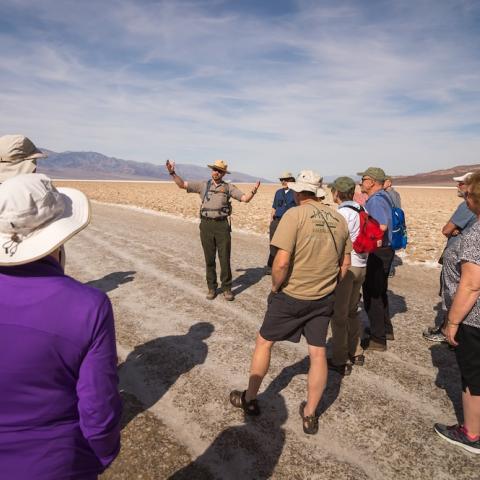
Aerial view of pot farm discovered in a remote area of Death Valley National Park/NPS
A pot farm roughly 40 acres in size has been discovered in a remote corner of Death Valley National Park by rangers.
The marijuana farm was found in Jail Canyon, a rarely-visited canyon on the western side of the Panamint Mountains in the California section of the Death Valley.
Park spokesperson Abby Wines said Friday evening that rangers flew over the site on Wednesday to both "photograph the extent and to (hopefully) encourage the growers to abandon the site."
Jail Canyon, which has been used by pot growers in the past, is temporarily closed for public safety reasons until park rangers can fully evaluate the area, she said.
Carbofuran and other dangerous chemicals have been found previously at marijuana grow sites in the park. In the past, growers have threatened hikers who have stumbled upon their illegal operations, a park release said.
“We are deeply saddened and concerned with the damage that these illegal activities cause,” said Barbara Durham, Traditional Historic Preservation Officer for the Timbisha Shoshone Tribe. “The natural and cultural resources in these areas are irreplaceable and invaluable, damaging them for profit shows incredible disrespect to our homeland.”
Marijuana grow sites significantly damage and destroy the park’s natural and cultural resources by introducing pesticides, land clearing, poaching, and waterway modifications. Although the climate of Death Valley may appear inhospitable to marijuana cultivation, over the past decade, hundreds of acres of marijuana have been illegally cultivated in the park.
“Preserving natural and cultural resources while providing an opportunity for the public to enjoy amazing places is at the core of our mission,” said Rob Wissinger, the park's chief ranger. “Seeing irreparable damage to a fragile ecosystem rich with rare natural and cultural resources is devastating.”
Few additional details were available Friday. Wines said no one was in custody and that the investigation was continuing.
Visitors to Death Valley’s most well-traveled areas are not at risk of finding a marijuana grow site. However, hikers in remote areas near water sources should remain alert, turn around and leave if they notice signs of suspicious activity, such as excessive amounts of trash, hillside terracing, or plastic irrigation tubing. Once safe, they should notify rangers at a visitor center or call the National Park Service tip line at 888-653-0009.
California legalized marijuana in 2016, but the federal government still classifies marijuana as a Schedule 1 controlled substance.




 Support Essential Coverage of Essential Places
Support Essential Coverage of Essential Places







Comments
The aerial photo shown in the article must be of a pot farm lower in Jail Canyon. There is a large pot farm higher up in Jail Canyon that appears to have been abandoned a few years back. I'm sure that DVNP already knows about that one. The one below Telescope Peak in Jail Canyon gets its water from the historic Birch Spring, high up in Jail Canyon. Birch is famous for being the source of the Skidoo Pipeline, which powered Montgomery's Gold Skidoo Stamp mill for 11 years from 1906 to 1917.
California does not tolerate illegal grows. But there is a new industry of legal farming. But the illegal grows still happen to avoid the costs including paying the state.
I'd note that the "420" moniker was supposedly about an illegal grow at Point Reyes.
It most likely is a small cartel operation, i fella I know saw a single Mexican and he didn't speak any English on the road coming down the canyon a few months ago. He thought from how he acted and his type of vehicle it was suspicious. Not the first time they have used the panaming range for illegal cultivation of pot and also meth.
I like the notion that if you arrest the criminals this will stop. these activities have been going on long before you were born and will continue long after you are dead. they say "where rock is criminal the criminal rock" not to mention most of these types of illegal grows are facilitated by cartels and arresting them results in little more than deportation.